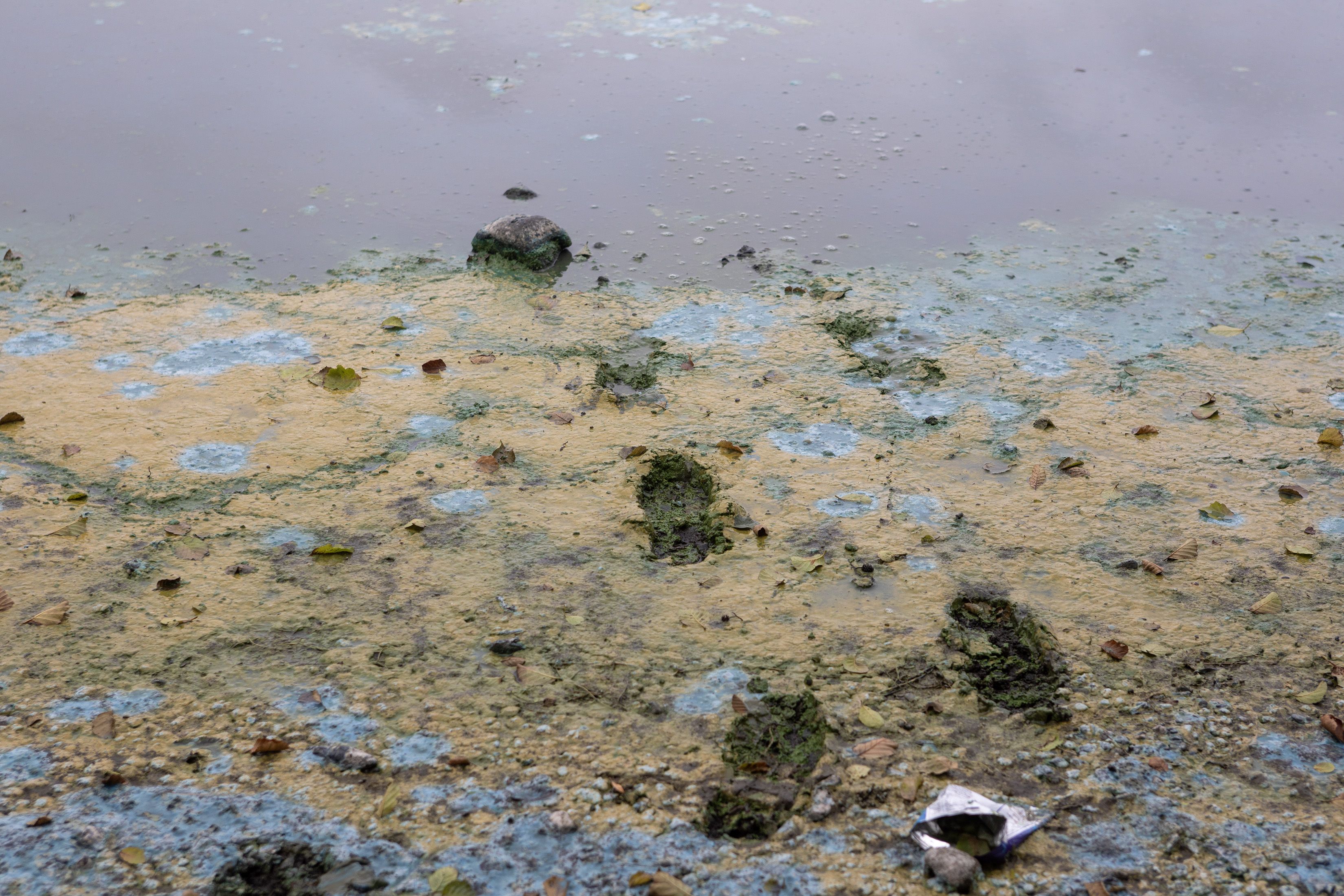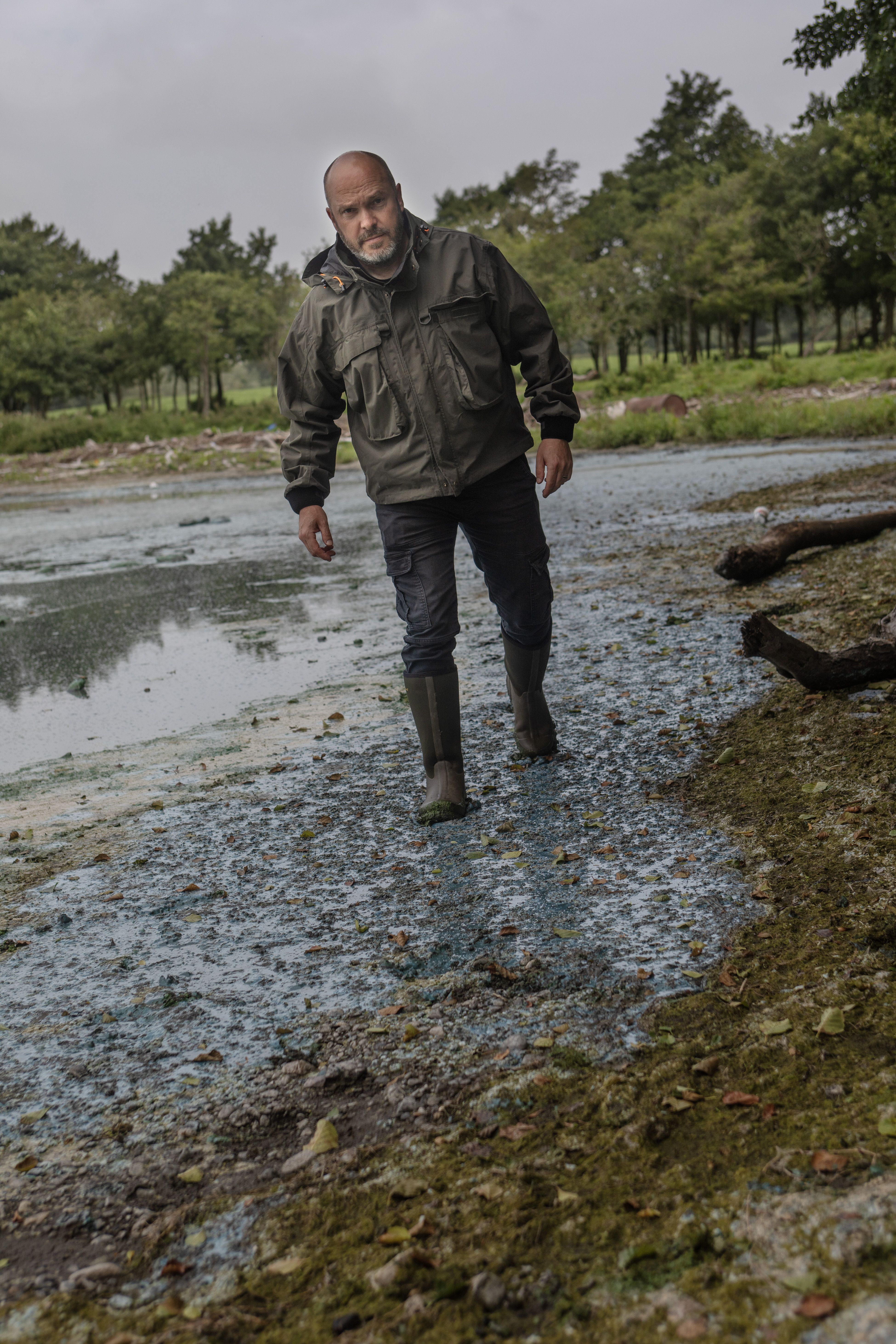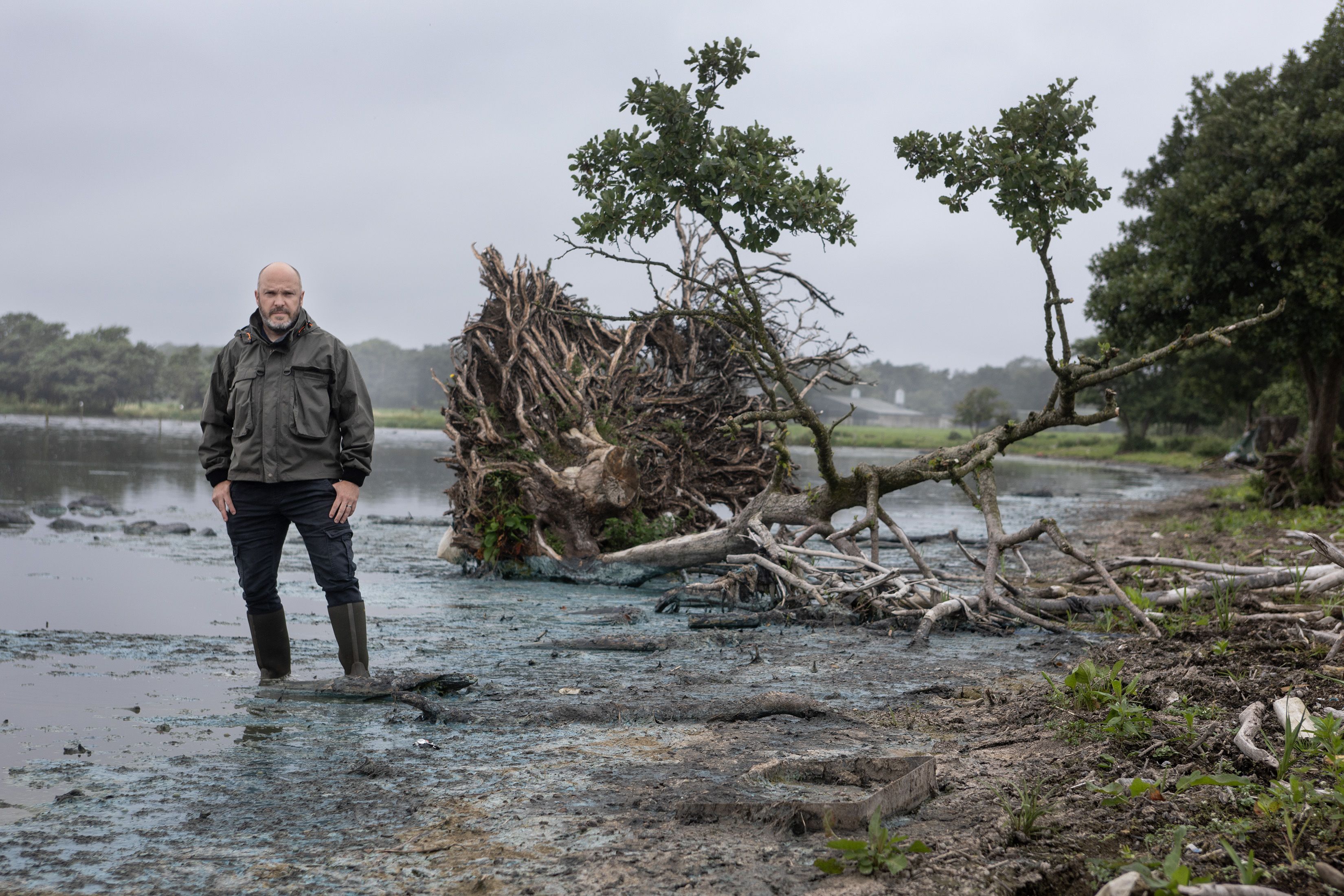TOXIC blue-green algae blanketing the shores of Lough Neagh is causing immense environmental damage to local ecosystems as well as spoiling the waterway for fishermen, tourists and locals.
Covering the shores in a thick layer of sludge, the algae's colours give an otherworldly appearance to the Lough as well as an unbearable odour, more akin to an abattoir than a European Special Protection Area.
The toxic algae – or microcystis – is harmful to wildlife and humans and has been responsible for the deaths of several dogs over the past two years. But far from being addressed, the problem is rapidly getting worse. The Lough is the biggest freshwater lake in Ireland and Britain and provides 40 per cent of the North's drinking water.
The Crumlin and District Angling Association (CDAA) says the main factor causing the algae is is agricultural pollution caused by the run-off of slurry.
ALGAE: The blue-green algae covers the shores of Ireland's biggest Lough
The deadly bacteria is the most visible symptom of what David Kennedy, committee member of CDAA, says has been year-on-year degradation of the Lough. The algae bloom is now being found all over the Lough's shore and rivers, from Toome to Randalstown and in other bodies of water such as Lough Erne, the River Bann, Castlerock, Portstewart, Benone and Portrush.
For anglers and those living on the Lough, the environmental impact is already being felt. Farmers who once let their livestock graze in fields opening on to the Lough's shore are now keeping them away, afraid the water will harm them.
Lough Erne, Lough Neagh, the Mournes, the antrim hills.. Every single one of our areas of special scientific interest are in a state of ecological collapse and there is absolutely zero political will to address it. https://t.co/ouOjDJGKJj
— JohnRoss MacMathúna (@Ceanncait) August 21, 2023
David said he has noticed wildlife avoiding the Lough as far away as Balinderry in Co Derry, which is connected to Lough Neagh through the Ballinderry River.
“We’ve seen herons and cormorants up at Ballinderry and they’ve definitely moved more upriver because of the algae," he said. "They usually wade in the waters of the Lough for small fish but they aren’t able to get through all of this algae to get to the fish. The wading and dipping birds who use the Lough are likewise having to get their food by dipping their beaks into this."
TOXIC: David Kennedy of CDAA demonstrating how thick the Lough algae is 
When the Andersonstown News visited the Lough shore near Crumlin, birds were foraging in the toxic bloom – species ranging from waders, swans, ducks and and house martins, birds which don't land to feed but skim the water to drink.
Lough Neagh needs to be in public ownership for proper management and community benefit. https://t.co/c22dJOUHPl
— Francie Molloy MP (@FrancieMolloy) August 24, 2023
Environmentalists say there is no political will to solve the crisis and the myriad of agencies on the part of the Department of Agriculture, Environment and Rural Affairs (DAERA), which has responsibility for the Lough.
Added David: “There are so many agencies involved who are just passing the buck, it’s unbelievable. The Health and Safety Executive said not to eat any fish caught in the Lough and this was challenged right away by commerical fisheries who were asking for clarification on that. Two days later they changed it to don’t eat fish caught recreationally, but commerical fisheries had to check with another body. This is what they do, just pass it on to someone else.
“You have local councils, loads of agencies which are under DAERA, such as the Environment Agency, Inland Fisheries, Health and Safety Executive, DAERA itself, NI Water.
"DAERA put out a statement saying that Rea’s Wood in Antrim was okay to swim in but then Antrim Council said the same day not to swim in the Lough – these agencies aren’t talking to each other and it’s just going round and round.
“I’ve asked about migratory fish coming up the Bann who will bunch together and come through the Lough. Fish such as salmon will bunch up at a sandbank and wait for a flood to go up the river to spawn and they’ll be swimming in this algae. I’ve asked them what about fish that have come through the Lough to run the rivers – there’s no clarification."
Asked about the issue of migratory fish, DAERA said we should contact the Food Standards Agency for comment.
POISONOUS: The algae is deadly to animals and humans and is already linked to the deaths of numerous dogs who have swam and drank from the water
For David, the CDAA and numerous other angling associations, the elephant in the room is agricultural waste running into the Lough. Heavy rains over the summer have seen slurry running from fields into the Lough and in some cases there has been direct dumping of slurry into the waterways. Experts say this nutrient-rich agricultural run-off is essentially a superfood for algae.
For the CDAA, a plan endorsed by all arms of government is needed to reverse “decades of degradation".
Very concerned about what's happening on Lough Neagh with blue-green algae - fish are starting to die, so what will birds and other wildlife do?
— Shauna Corr 🌍 (@ShaunaReports) August 16, 2023
This is a perfect storm of inaction on pollution mixed with climate breakdown which is heating up the water 📹 Michael Henry pic.twitter.com/gq3KwuHGlu
Sinn Féin Councillor for Antrim and Newtownabbey's Airport DEA, Anne Marie Logue, said the algae bloom choking the Lough is "extremely concerning".
“This algae is toxic and harmful to humans and animals alike," she said. "The advice from the Public Health Agency is that you should not be in contact with water in the areas affected as it can cause skin rashes, nausea, vomiting, headaches and fever.
“We need to see a strong, co-ordinated response to this very real ecological disaster from the councils surrounding Lough Neagh and the many agencies under DAERA and other departments that can have an impact and help address the scourge of this algae on our local environment.”







